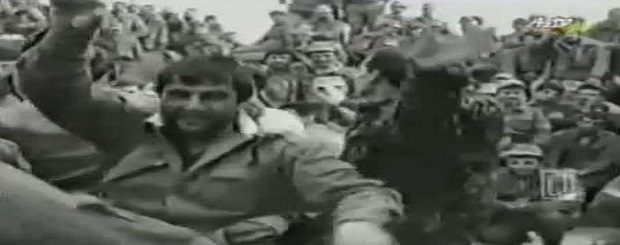
Art-A-Tsolum – The Maragha Massacre – From The Archives Of The “Republic Of Armenia” Newspaper
January 23, 2020 – History – Art-A-Tsolum – PREVIOUS ARTICLE:
The below article by Vazgen Baghdasaryan, a retired colonel, describes the massacre in Maragha. The post contains eyewitness accounts of the events of April 10, 1992.
Two years after the massacre in Maragha
“Two years have passed since the day of the Maragha tragedy – the massacre of Maragha. Miraculously, those who survived that barbarous bloody massacre will gather on April 10 to pay tribute to those who died on that day in 1992.
There were 54 of them. During these two years, 23 Maragha residents — children, women, old people — have been rescued from Azerbaijani prison dungeons. Among them was Gezal Barseghyan with his three young children – Liana, Ulyana, and Henry. Among them also were 8-year-old Narek Hambardzumyan and 4-year-old Lelya who could only speak Azerbaijani.
And although two years have passed, eyewitnesses today cannot talk about the events of those days without tears and shudder. Can you forget what you saw with your own eyes?

Here’s what Lena Barseghyan says:
‘I together with a neighbor, 70-year-old Vardanush, was hiding in the basement. Standing on the threshold of the dark basement, the Azerbaijanis started shooting at the doorway from machine guns. They wounded me and Vardanush. We screamed.
The Azerbaijanis came in, found us, and, beating us with their guns, drove us out of the basement. In the courtyard, Vardanush, bleeding, fell unconscious. A tank came from around the corner and drove over her body.
All that was left of her was minced flesh, blood, and soil. This is still terrifying to remember.
I together with other villages was stripped naked and driven to Mir-Bashir. Here, the deputy chief of the local police was the boss. He sold the hostages, including me, to other Azerbaijanis.
I ended up in Mingachevir, then in Kirovabad, then in Baku. We became objects – they sold us to anyone they wanted. It is difficult to talk about everything that I had to endure in captivity.
I was released after being exchanged with the body of a killed riot police officer and even 3 million rubles.’
No less terrible story was told by Zhenya Isakovna Ghazaryan. Together with other hostages – Razmik Movsesyan and Sveta Movsesyan – she was kept as dogs by the deputy head of the Mirbashir prison. He did not allow them to stand on their feet or talk. They were in chains, walked on all fours, and were not fed. After some time, Sveta was killed, and her husband who had become distraught and had lost his human appearance was fed on her remains. Then, they killed him as well.
29 people from Maragha (if alive) are still suffering in captivity in Azerbaijan. No one knows when they will be liberated, especially since the release and exchange of prisoners have become the business of mafia groups specializing and profiting from bloodshed and suffering.
During these two years, more than 30 young, healthy Maragha people have died from the endured horror and suffering. They again are victims of that terrible tragedy.
Let’s draw a parallel between the events in Maragha and Khojaly… The whole world knows about the falsified version of Khojaly. Azerbaijan has announced it a day of national mourning.
What about Maragha? Who knows about it? Who knows about the fates of the homeless Maragha people wandering around the world?
In 1920, Azerbaijanis burned Maragha. Residents hid in mountain villages and forests. But they would return and start cultivating their amazing gardens, sowing fields, building a new Maragha. And they would build a beautiful, fertile village.
And now? Have the people of Maragha forever left their homes, the graves of their fathers? Many people from Maragha wonder – if they return, where is the guarantee that the tragedy will not happen again, that their children will not again become victims of the atrocities of Azerbaijanis?
The guarantee lies in the reinforcement of the state, the unification of the Karabakh people, struggle, and resistance. The guarantee is not in finding happiness in a foreign land – you will not find happiness there – but in returning to your homeland, protecting it even at the cost of their lives. This applies not only to people from Maragha but to all Karabakh people.
Fortunately, many understand this and return to their homeland to fight in the ranks of the Karabakh militia. The three sons of Arshavir Sargsyan – Kamo, Shamo, and Gagik – perished during the defense of Maragha, and the other two – Araik and Levik – are today fighting in the ranks of the Karabakh Defense Army, avenging the death of their brothers.
The NKR government in the region of Arachadzor allocated land and houses for Maragha residents. And people are indeed moving there.
The day is near when Maragha is free and its inhabitants are able to return to their homes.”
Vazgen Baghdasaryan, Retired Colonel, “Republic Of Armenia” issue 64, April 9, 1994.
Azerbaijani riot police in Maraga, after the massacre of Armenians
allinnet.info/history/the-maragha-massacre-from-the-archives/
